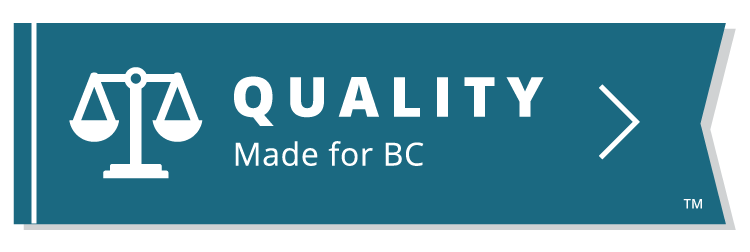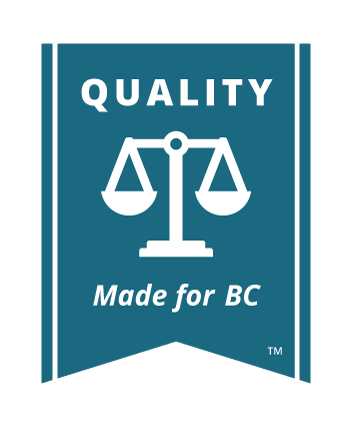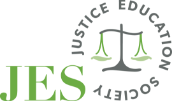Rules of Evidence
Evidence is defined as “the facts used to support an assertion or conclusion”. The judge or jury will decide based on the evidence that is presented at trial. Only evidence that is relevant and material to your case is allowed to be presented in court.
Relevant: Evidence that relates directly to the issues in your case. For example, if you want to show a witness to a robbery is unreliable:
Relevant Evidence: the witness’ history of lying (having a record for perjury or whose evidence was not accepted in a previous case.
Not Relevant Evidence: the witness’ sexual history.
Material: Evidence that is important or essential to the issues in your case. For example, if you want to show that a Crown witness is unreliable:
Material Evidence: the witness has a conviction for perjury a year ago.
Not Material Evidence: the witness has a conviction record with a single instance of shoplifting 40 years ago.
Relevant and Material evidence may still be excluded from the trial if:
- It is privileged, as in, there is a legal reason that this type of evidence is not allowed
- It is too prejudicial, as in, the danger of the evidence causing confusion, unfair prejudice, or delay outweighs the usefulness of the evidence
If you think evidence presented by the Crown or their witnesses is irrelevant, immaterial, or prejudicial you can object when the evidence is brought up. See Objections below for more information.
Voire Dire
There are rules about what kind of evidence is admissible (allowed) at trial. A voire dire is a mini-trial within the trial where a judge decides whether evidence will be allowed to be heard during the trial. Some reasons a voire dire might be held is to determine whether:
- Evidence was obtained because of a Charter violation,
- A proposed expert witness has sufficient qualifications to be an expert,
- The warrant that led to the evidence was valid.
If there is a jury, the judge will dismiss the jury for the voire dire. If it is a judge alone trial, the trial judge will only consider the evidence they decide is admissible in making their final decision.
Types of evidence
There are basically two types of evidence:
- “Real” evidence: Things like physical or electronic documents, records, contracts, pictures, and videos, or objects like clothing, drugs, and weapons.
- Oral evidence: Sworn testimony given in court by witnesses. See Witnesses to learn more.
Entering Real Evidence
If you wish to enter a document, photograph or object as an exhibit, you must either have the agreement of the Crown or have a witness identify the thing. Identifying the thing means that the witness is able to say that they made, saw or had possession of the thing and that they recognize it.
Depending on the type of evidence that you want to rely on to support your case, you must prove that:
- it is accurate;
- it fairly represents the facts and is free of any intention to mislead; and
- it can be verified on oath or affirmation by a witness (the author or another person
- capable of doing so).
- you can account for everything that happened to the object (called continuity) since you acquired it.
- it fairly represents the facts and are free of any intention to mislead through, for example, editing or camera angles
Ideally, it is best if you can put the original document or recording into evidence. However, if you cannot produce the original, you may be able to get someone to authenticate the copy if authentication is required.
The judge will consider whether to allow the evidence, and then enter it as an exhibit. If it is entered, the court clerk will then assign a number to the exhibit. You should make a list of the things that are entered into evidence and their exhibit number, or ask the court clerk for a copy of the exhibit list at the end of each court day.
Objections
There are many reasons you (or the Crown) may wish to object during a trial, but in general it is when you think the rules of evidence or court are not being followed. You may have seen lawyers on TV yelling “objection!” In real life, yelling is usually not necessary. To object:
- Stand up and say “objection”
- Wait for the Crown to stop talking and the judge to recognize you
- Tell the judge what you object to an why
- Sit down and listen to the Crown’s response
- Listen to the judge’s decision
If you are talking and the Crown stands up to object:
- Stop talking and sit down
- Listen carefully to the reasons the Crown objects
- when the Crown finishes, stand up and if you can, argue why the evidence or question should be allowed
- Listen to the judge’s decision
If you are a witness testifying and someone objects, stop talking and wait for the judge to make a decision. Follow the judge’s directions. You may be asked to leave the room temporarily.
Below is a table that includes some types of objections:
|
Objection |
Reason |
|
Irrelevant or immaterial |
Does not relate to an issue in the case or not important or essential to the issue in the case |
|
Unfairly prejudicial |
Creates unfairness by creating confusion or taking up too much time |
|
Privileged |
Communications protected by law such a attorney/client privilege |
|
Improper opinion |
A witness giving their opinion when they are not qualified as an expert on that point |
|
Hearsay* |
The witness did not have first hand knowledge (*there are exceptions) |
|
Leading question |
Asking a leading question in direct examination on issues in dispute |
|
Repetitive |
The witness has already answered a question |
|
Assumes facts not in evidence |
For example, asking a witness when they saw the black truck without first establishing that they actually saw the black truck |
|
Improper characterization |
Misrepresents what was said |
|
Unreliable |
The evidence being introduce came from an unknown source and is therefore unreliable |
Hearsay is information learned by a witness from someone else, rather than witnessing it first hand themselves. Additionally, the statement being offered as evidence is being offered for the truth of what was said.
For example:
- Witness: “Charlie said Ed left work early” is hearsay if it is being offered as evidence that Ed left work early. If it is being used to establish a state of mind, rather than for the truth of what was said, then it may still be entered as evidence. For example, “Charlie said Ed left work early. I thought Ed was gone which is why I called his home to see where he was.”
- Witness: “I saw Ed leave work early” is not hearsay, as it is first hand knowledge.
There are a number of exceptions to hearsay. It can be complicated and legal advice is recommended.

Learn More
Criminal Law Handbook for Self-Represented Litigants, Canadian Judicial Council







 JusticeEducation.ca
JusticeEducation.ca JusticeEd
JusticeEd /JusticeEducation
/JusticeEducation